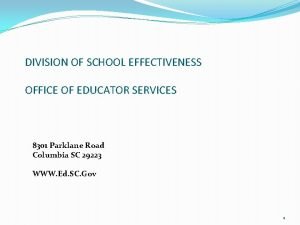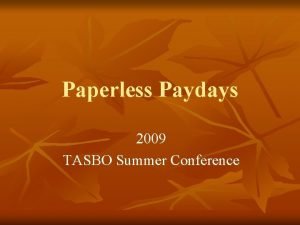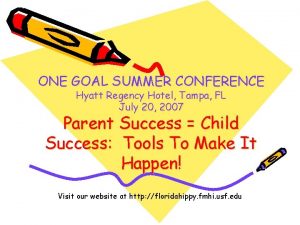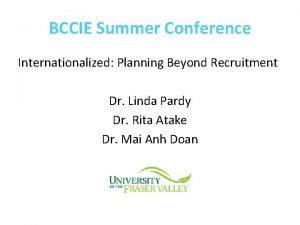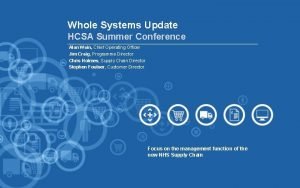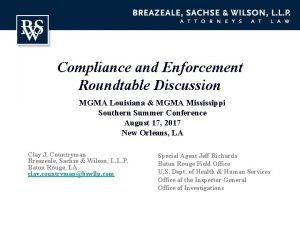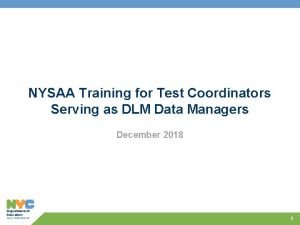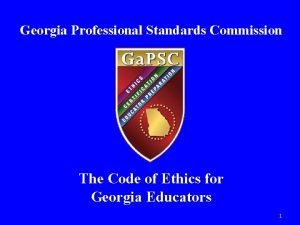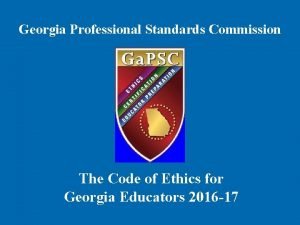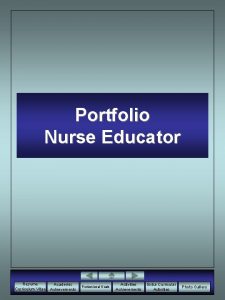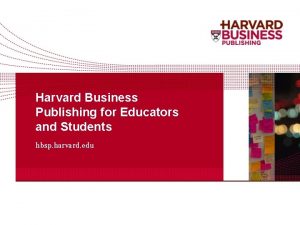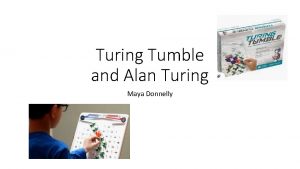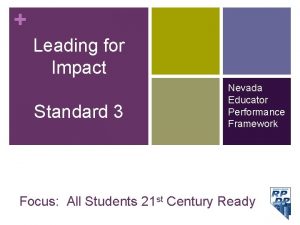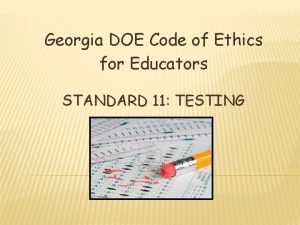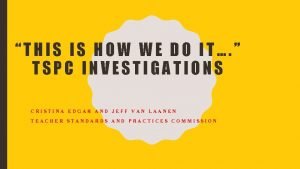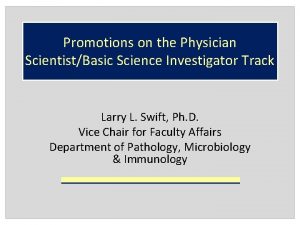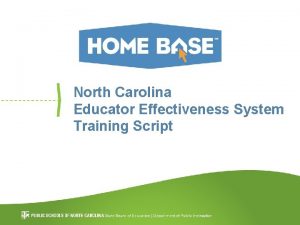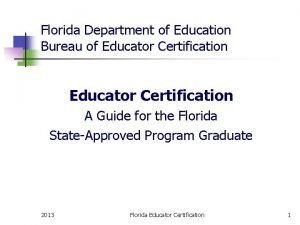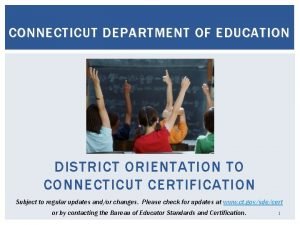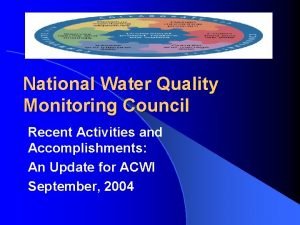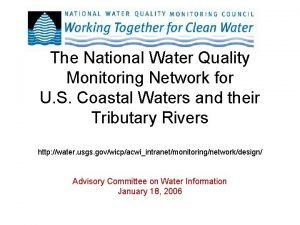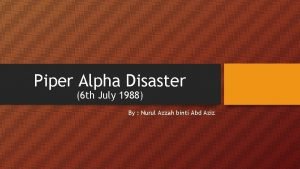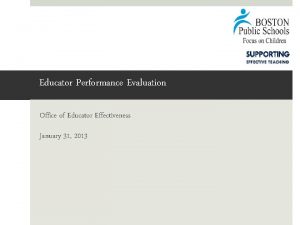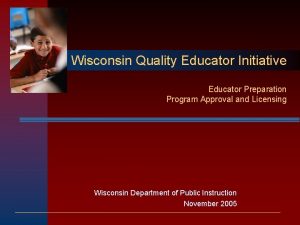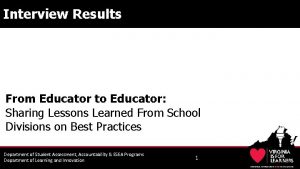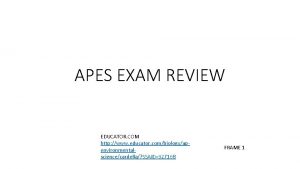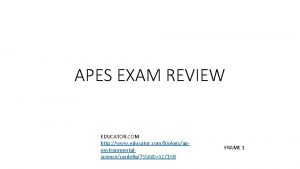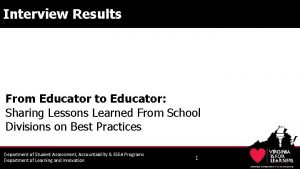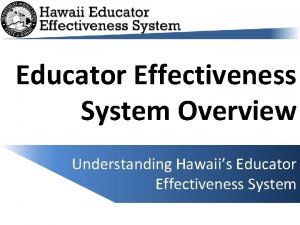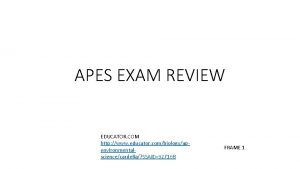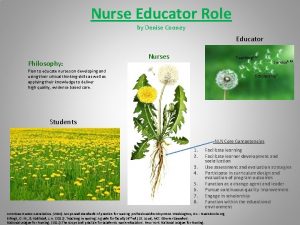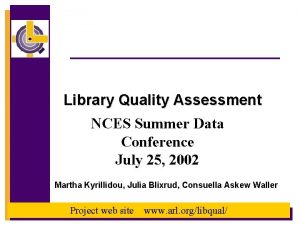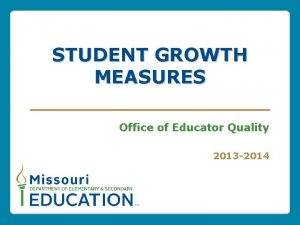OFFICE OF EDUCATOR QUALITY MASS Summer Conference July


















































- Slides: 50

OFFICE OF EDUCATOR QUALITY MASS Summer Conference July 2015 1

Equity Access to Excellent Educators EQUITY ACCESS ©MDE – Office of Educator Quality 2

Equity Access to Excellent Educators • Teachers are the single most important school-based factor affecting student achievement. 1 • Low-income students and students of color are disproportionately located in the lowest-performing schools, which have half as many highly effective and 1. 5 times as many ineffective teachers as highperforming schools. 2 • Providing high-need students with equitable access to effective teachers is a strategy that can close the achievement gap. High-need students means students at risk of educational failure or otherwise in need of special assistance and support, such as students who are living in poverty, who attend high-minority schools, who are far below grade level, who have left school before receiving a regular high school diploma, who are at risk of not graduating with a diploma on time, who are homeless, who are in foster care, who have been incarcerated, who have disabilities, or who are English language learners. 3 ©MDE – Office of Educator Quality 3

Development of Teachers • Although the problem of inequitable access may begin with the supply of teachers, it compounds over time as new teachers develop their skills. 3 – In low-poverty, low-minority schools, teachers develop more quickly and improve over a longer period of time more often than in high-poverty, high-minority schools. 4 – In low-poverty schools, teacher effectiveness increases with experience, particularly from years 6 to 12; whereas teacher effectiveness plateaus in high-poverty schools after 5 years of teaching. 5 ©MDE – Office of Educator Quality 4

Teacher Mobility and Attrition • Teacher attrition is problematic because high levels of teacher turnover usually result in higher levels of teachers with little or no experience, who are on average less effective than their peers with at least 2 years of experience. • To address the issue of inequitable access, we must also understand the impact initial placement has on a teacher’s career and student learning, the amount of time he or she will stay in his or her initial placement and the reasoning behind his or her decision to transfer to another school or district or to leave the profession entirely. ©MDE – Office of Educator Quality 5

State Data • 2014 -2015: – 7. 65% of teachers do not have previous teaching experience – 25. 43% of teachers have between 0 -3 years are inexperienced – Of the 55 school districts with 90% or more free/reduced lunch status: • 47 districts exceed state average of new/inexperienced teachers – 9. 84% of teachers are eligible to retire ©MDE – Office of Educator Quality 6

State Data • 14 School Districts employ 25% or more non-highly qualified teachers. • All 14 of those districts are 100% free/reduced lunch based on 2014 -15 snapshot data. ©MDE – Office of Educator Quality 7

Conducting a Root Cause Analysis – Ongoing Professional Learning • Lack of Aligned Professional Learning Opportunities – Teachers and principals may not have access to professional learning that is directly linked to their goals, needs, or content area or linked to the expectations included in the evaluation system. This situation not only negatively affects the district’s ability to improve the practice of the existing teaching force but also limits opportunities for teacher advancement into leadership roles. • Inconsistent Induction and Mentoring Opportunities – Stakeholders (including teacher and district personnel) shared that this challenge is especially relevant to new teachers, who often need higher levels of professional learning than their more veteran peers. ©MDE – Office of Educator Quality 8

Conducting a Root Cause Analysis – Teacher and Principal Preparation • Well-prepared educators positively impact student achievement and have lower turnover rates, and thorough teacher and principal preparation provides candidates with the knowledge and skills they need for successful instruction and leadership. – Fiscal Equity • High-need schools tend to face complicated resource needs at the school level (e. g. , larger individualized education program costs, costs associated with behavioral issues, remedial education needs. ) If available resources at these schools are systematically inadequate, their ability to maintain attractive school facilities and provide teachers with instructional and non-instructional supports will suffer, leading to high turnover. ©MDE – Office of Educator Quality 9

• No single strategy will solve the problem of inequity access. Those committed to improving access will likely employ a combination of strategies to address root causes of inequity access. ©MDE – Office of Educator Quality 10

Educator Licensure: LICENSURE AND ELMS ©MDE – Office of Educator Quality 11

LICENSURE & ELMS • Elementary Certification: – Beginning September, 2016, all teachers seeking elementary certification through a traditional route program will be required to take and pass the Pearson Foundations of Reading assessment for certification. Information about that assessment can be found on the Educator Quality website. – Beginning September 30, 2015, the Praxis I will no longer be accepted for certification. ©MDE – Office of Educator Quality 12

LICENSURE & ELMS • Student Intern License (101) – Will certify all student teachers with a temporary license for student teaching only. – Will require student teachers to abide by the MS Educator Code of Ethics. – Proposed implementation: Fall 2015 ©MDE – Office of Educator Quality 13

LICENSURE & ELMS • The requirements for ENTRY into a teacher preparation program have been revised (MS Code 37 -3 -2) and now require: – Passing Praxis Core scores or 21 or above ACT scores – Minimum GPA of 2. 75 with a cohort GPA of 3. 0 ©MDE – Office of Educator Quality 14

LICENSURE & ELMS • Applications for certification (renewals, upgrades, reciprocity, etc. ) are loaded into ELMS. Once the file is complete it is assigned to an analyst and processed in order based on the date the application was complete. • There are 2, 973 applications pending now (as of this morning). The turnaround time for processing applications is currently 20 business days. • If you are awaiting certification to offer a job to a prospective teacher please use the contingent contract. If the educator fails to receive his/her license, the contract will become void in October. – Things you should verify before issuing a contingent contract: Praxis scores and transcript confirming a degree ©MDE – Office of Educator Quality 15

LICENSURE & ELMS • Applications in ELMS are considered confidential. Discussions about the contents of an educator’s file will only be conducted with the educator. ©MDE – Office of Educator Quality 16

LICENSURE & ELMS • Renewing licenses in ELMS – CEUs must be obtained through an accredited CEU granting agency. Any Continuing Education Office at a college, university, or community/junior college is an accredited CEU granting agency. – CEU credit for less than. 5 should not be accepted. – 10 hours = 1 CEU – An annual audit will be conducted to verify renewals at the district level are compliant with SBE policy. – An educator’s renewal will be void if proper documentation is not used to satisfy the requirements for renewal. ©MDE – Office of Educator Quality 17

Educator Misconduct • Reporting period for Superintendents – 10 days • Code of Ethics training – Please conduct annually • Common Reporting offenses: – Texting – Sexting – Breach of Contract – Inappropriate Relationships – Physical – Inappropriate Relationships – Non-Physical – Violation of Student Rights to Privacy and Religion. ©MDE – Office of Educator Quality 18

Educator Evaluations Cerissa Neal Office of Educator Quality

Federal and State Theory of Action Improved Evaluation System Improved Educator Quality ©MDE - Office of Educator Quality Improved Student Outcomes 20

The Goals of an Evaluation System “In theory, an evaluation system should identify and measure individual teachers’ strengths and weaknesses accurately and consistently, so that teachers get the feedback they need to improve their practice and so that schools can determine how best to allocate resources and provide support. ” Weisberg, D. , Sexton, S. , Mulhern, J. , Keeling, D. (2009). The Widget Effect: Our National Failure to Acknowledge and Act on Differences in Teacher Effectiveness. Retrieved from the New Teacher Project: http: //tntp. org/publications/view/the-widget-effect -failure-to-act-on-differences-in-teacher-effectiveness ©MDE - Office of Educator Quality 21

Improving Teaching Practice “Across the nation, states and districts are in the process of building better teacher evaluation systems that not only identify highly effective teachers but also systematically provide data and feedback that can be used to improve teacher practice. ” Goe, L. , Holdheide, L. , & Miller, T. (2011). A Practical Guide to Designing Comprehensive Teacher Evaluation Systems A Tool to Assist in the Development of Teacher Evaluation Systems. Retrieved from National Comprehensive Center for Teacher Quality: http: //www. lauragoe. com/Laura. Goe/practical. Guide. Eval. Systems. pdf ©MDE - Office of Educator Quality 22

Teacher Evaluation IS NOT a Silver Bullet “Teacher evaluation systems alone are insufficient to improve instructional quality and increase student achievement. To be successful, reform efforts need to be coherent and aligned across the educator career continuum, beginning with recruitment and preparation, and extending to support, evaluation, and compensation. ” Angela Minnici The Mind Shift in Teacher Evaluation ©MDE - Office of Educator Quality 23

MS Board of Education Strategic Plan Goal 4 Strategy: Every School Has Effective Teachers and Leaders Implement with fidelity Mississippi Teacher Evaluation System (MTES) and Mississippi Principal Evaluation System (MPES) and other educator evaluation systems. ©MDE - Office of Educator Quality 24

Educator Evaluations • • Mississippi Teacher Evaluation System Mississippi Principal Evaluation System Mississippi Counselor Appraisal Rubric Mississippi Student Services Appraisal Rubric • Mississippi Speech-Language Pathologist Assessment • Mississippi Librarian Evaluation Instrument ©MDE - Office of Educator Quality 25

M-STAR • • • Teacher Self-Assessment Walk-through Visits Formal Observations/Conferences Review of Artifacts Student Survey (optional) ©MDE - Office of Educator Quality 26

The Teacher Observation Cycle 1. Teacher Self-Assessment (optional) • Based on the M-STAR standards 2. Walk-through (informal) Observations • A minimum of two are required (at least five are recommended) • Beyond the two required, the frequency and length of time of the walk-through visits are at the discretion of the school district. ©MDE - Office of Educator Quality 27

The Teacher Observation Cycle 3. Formal Observation and Conferences • Pre-Observation Conference (optional) Ø Discussion of the lesson to be observed Ø Discussion of teacher self-assessment • Formal Observation Ø Two are recommended Ø A minimum of one is required Ø A minimum of 30 minutes • Formal Post-Observation Conference Ø Required after each formal observation Ø Discussion/Feedback Ø Next Steps/professional growth plan 4. Student Surveys (optional) ©MDE - Office of Educator Quality 28

Rubric Overview • Five domains (weighted equally) 1. Planning 2. Assessment 3. Instruction 4. Learning Environment 5. Professional Responsibilities • 20 Standards ©MDE - Office of Educator Quality 29

Rubric ©MDE - Office of Educator Quality 30

Rubric ©MDE - Office of Educator Quality 31

Rubric Domain V Professional Responsibilities ©MDE - Office of Educator Quality 32

Performance Levels Performance ratings Level 4 Level 3 Description • Level 4 is the most effective level of teacher performance. Rating at this level indicates that the teacher’s performance is exemplary; consistently exceeding expectations. Teachers who receive this rating should receive professional development and support to continue to grow and develop their skills. • Level 3 is the expectation for all teachers. Rating at this level indicates the teacher’s performance consistently meets expectations. Teachers who receive this rating should receive professional development and support designed to address the identified area(s) for growth. Level 2 • Level 2 indicates either a beginning teacher or a teacher who needs focused professional development. Rating at this level indicates the teacher is sometimes meeting expectations, but not doing so consistently. Teachers who receive this rating should receive professional development and support designed to address the identified area(s) of challenge. Level 1 • Level 1 is the least effective level of teacher performance. Rating at this level indicates the teacher’s performance is not acceptable. Teachers who receive this rating rarely meet expectations. Teachers who receive this rating should receive immediate and comprehensive professional development and support designed to address the identified area(s) for growth. ©MDE - Office of Educator Quality 33

M-STAR Standards Ratings • Ratings for all twenty standards should be linked to the evidence collected during the formal observation(s), walk-through (informal) observations, artifact review, and post-observation conference(s). • Pre-observation conferences and student surveys are optional methods of evidence collection. ©MDE - Office of Educator Quality 34

Example: Summative Observation Rating ©MDE - Office of Educator Quality 35

PRINCIPAL EVALUATION 36

MPES Target Dates ©MDE – Office of Educator Quality 37

MS Principal Evaluation System In 2014 -2015, the MDE began capturing MPES data in ELMS as the method chosen to monitor MPES implementation throughout the school year (federal requirement). *Note: Scores will be reported via Share. Point for the 20142015 MPES cycle due to the waiver that allows states respite from using student assessment data in educator evaluation for 2014 -2015. ©MDE – Office of Educator Quality 38

MPES-ELMS: Superintendent • The superintendent (or his/her designee) creates a list of all school administrators in the district (which assigns the MPES module to them) • The superintendent reports MPES scores at the end of the MPES cycle ©MDE – Office of Educator Quality 39

MPES-ELMS: School Administrators • School administrators log into ELMS after MPES conferences and enter required data in the MPES module • Required data include: – All goal-setting data – Supervisor information – Certified staff and student numbers – Action plan completion date – Conference dates ©MDE – Office of Educator Quality 40

Educator Misconduct Conducting Investigations 41

Educator Misconduct Conducting an Investigation MS Code 37 -3 -2 Certification of Teachers and Administrators • Obtain as much information as possible. The more information that is obtained the easier it becomes to make a decision. ©MDE – Office of Educator Quality 42

Educator Misconduct Begin the investigation Immediately! • • Secure Physical Evidence Photograph the scene of the event Document what happened Make a list of potential witnesses ©MDE – Office of Educator Quality 43

Educator Misconduct Plan the Investigation • Who is in charge of the investigation? • What facts are needed to substantiate or prove unsubstantiated the allegation? • What documentation is available? • Is there evidence that needs to be collected? • Who should be interviewed? (What information is expected? ) • What other agencies (DHS, Police, District Attorney, etc. )? need to be involved • What independent actions should the school system take immediately? ©MDE – Office of Educator Quality 44

Educator Misconduct Conducting and Investigation • • • Questions to Ask: WHO was involved? WHAT happened? WHEN did it happen? WHERE did it happen? WHY did it happen? HOW did it happen? ©MDE – Office of Educator Quality 45

Educator Misconduct Interview Questions • Avoid Leading Questions • Do you remember X? Avoid Yes or No Questions. Were you at the gym on Friday? • Ask: Where were you on Friday? • Avoid Negative Wording • You don’t remember X, do you? • Allow the witness to talk. • Ask: Tell me what you remember about… ©MDE – Office of Educator Quality 46

Educator Misconduct Interviewing Children • Open-Ended Questions - avoid the use of questions that typically result in a Yes or No answer. • Do not assume that you understand. If at first you don’t understand what they are trying to tell you, ask them to restate what they want to say. • Allow the child to move around, fiddle it allows the child feel they have some control. • Listen and observe nonverbal expressions. Indirect approaches work best with reluctant children. • Encourage the child to expand, “What happened next? ” and “You were saying that ____ ” • Adolescents - written statements are possibly more effective than interviews. They tend to express private feelings. ©MDE – Office of Educator Quality 47

Educator Misconduct What to Report • • Violations of Standard 1. 2 (Misuse or mismanagement of tests or test materials) that affect the validity of mandatory uniform test results as provided in Section 37 -16 -4 (1) Violations of Standard 2 (Trustworthiness) that result in a felony conviction Violations of Standard 3 (Unlawful Acts) (felony and sex offense convictions) Violations of Standard 4 (Educator/Student Relationships) Violations of Standard 7 (Public Funds and Property) that result in a felony conviction Violations of Standard 6 (Alcohol, Drug and Tobacco Use or Possession) that result in termination and/or a felony conviction Violations of Standard 9 (Maintenance of Confidentiality) that affect the validity of mandatory uniform test results as provided in Section 37 -16 -4 (1) Violations of Standard 10 (Breach of Contract or Abandonment of Employment) ©MDE – Office of Educator Quality 48

Contact Information • Cerissa Neal, Executive Director, Office of Educator Quality – 601 -359 -3631 or cneal@mde. k 12. ms. us • Sargent Holley Haywood, Licensing Investigator – 601 -359 -3631 or hhaywood@mde. k 12. ms. us • Amy Daniel, Office Director, Educator Misconduct – 601 -359 -3483 or adaniel@mde. k 12. ms. us • Tarance Hart, Office Director, MS Teacher Center – 601 -359 -3631 or thart@mde. k 12. ms. us • Lisa White, Educator in Residence, Principal Evaluations – 601 -359 -3631 or lwhite@mde. k 12. ms. us ©MDE – Office of Educator Quality 49

References 1 Aaronson, D. , Barrow, L. , and Sander, W. (2007). Teachers and students achievement in Chicago public high schools. Journal of Labor Economics. 25(1): 95 -135. 2 TNTP. (2012). The irreplaceables: Understanding the real retention crisis in America’s urban schools. The New Teacher Project. 3 Reform Support Network. (2015). Promoting more equitable access to effective teachers: Problem and root causes. 4 Tenessee Department of Education. (2009). 5 Sass, T. (2010). Value added of teachers in high-poverty and lower-poverty schools. National Center for Analysis of Longitudinal Data in Education Research. 6 Goldhaber, D. (2009). Teacher career paths, teacher quality, and persistence in the classroom: Are public schools keeping their best? . National Center for Analysis of Longitudinal Data in Educational Research. ©MDE – Office of Educator Quality 50
 Office of educator services
Office of educator services Tasbo summer conference
Tasbo summer conference One goal summer conference
One goal summer conference Bccie summer conference
Bccie summer conference National conference on agriculture for summer campaign
National conference on agriculture for summer campaign Hcsa summer conference
Hcsa summer conference Mgma summer conference
Mgma summer conference Bccie summer conference
Bccie summer conference Dlm training
Dlm training Micro teaching lesson plan sample
Micro teaching lesson plan sample Georgia educator code of ethics
Georgia educator code of ethics Georgia professional standards commission
Georgia professional standards commission Msde educator portal
Msde educator portal Nurse educator resume
Nurse educator resume Microsoft innovative educator trainer academy
Microsoft innovative educator trainer academy Define the health education
Define the health education Harvard business educator
Harvard business educator Allied educator primary school
Allied educator primary school Alabama teacher code of ethics
Alabama teacher code of ethics Slo and ppg examples
Slo and ppg examples Maya donnelly
Maya donnelly Nevada educator performance framework
Nevada educator performance framework Georgia educator code of ethics
Georgia educator code of ethics Tspc complaints
Tspc complaints Vumc educator portfolio
Vumc educator portfolio Nc educator effectiveness system
Nc educator effectiveness system Bureau of education certification florida
Bureau of education certification florida Ct teacher certification lookup
Ct teacher certification lookup Microsoft educator network
Microsoft educator network Maik nogens
Maik nogens National water quality monitoring council
National water quality monitoring council National water quality monitoring conference
National water quality monitoring conference National water quality monitoring conference
National water quality monitoring conference Archie smith boy wonder
Archie smith boy wonder Just desert harris burdick story
Just desert harris burdick story July 1-4 1863
July 1-4 1863 Tender definition
Tender definition Ruth bruno
Ruth bruno 2001 july 15
2001 july 15 2003 july 17
2003 july 17 July 30 2009 nasa
July 30 2009 nasa Sources nso july frenchhowell neill technology...
Sources nso july frenchhowell neill technology... What is the significance of july 4 1776 brainpop
What is the significance of july 4 1776 brainpop I am silver and exact i have no preconceptions
I am silver and exact i have no preconceptions The cuban melodrama
The cuban melodrama Poppies in july poem
Poppies in july poem July 10 1856
July 10 1856 Ctdssmap payment schedule july 2021
Ctdssmap payment schedule july 2021 July 1969
July 1969 6th july 1988
6th july 1988 Monday 13th july
Monday 13th july
